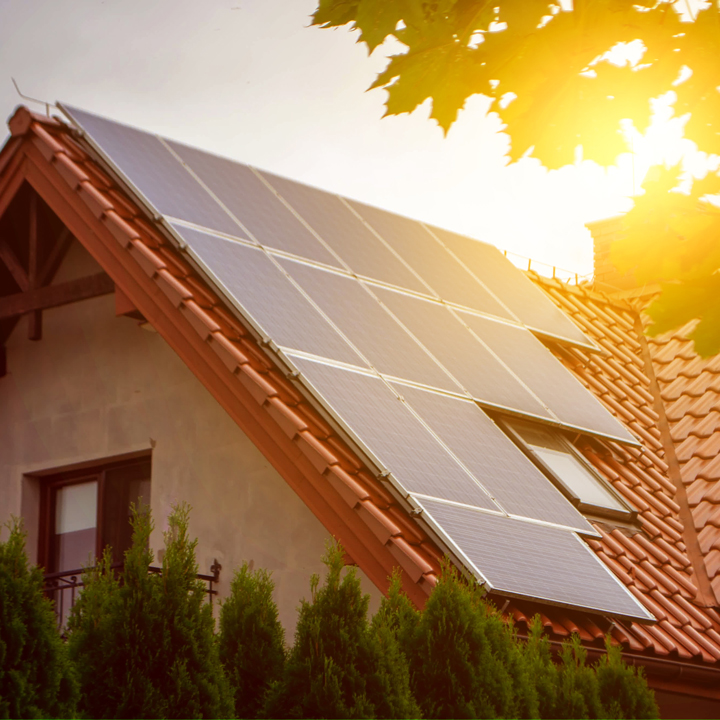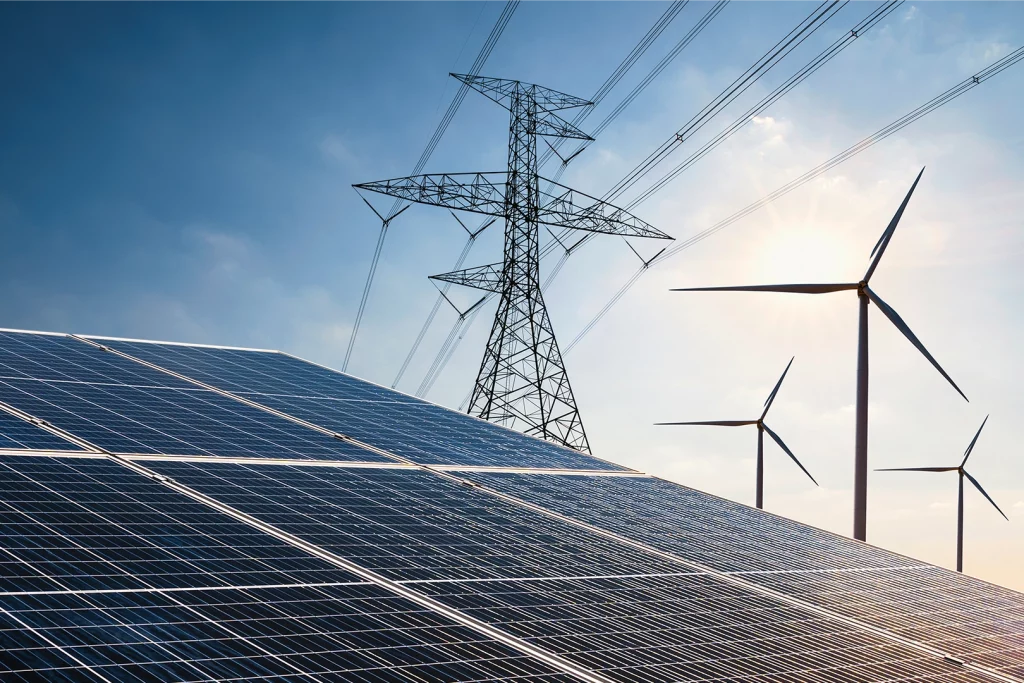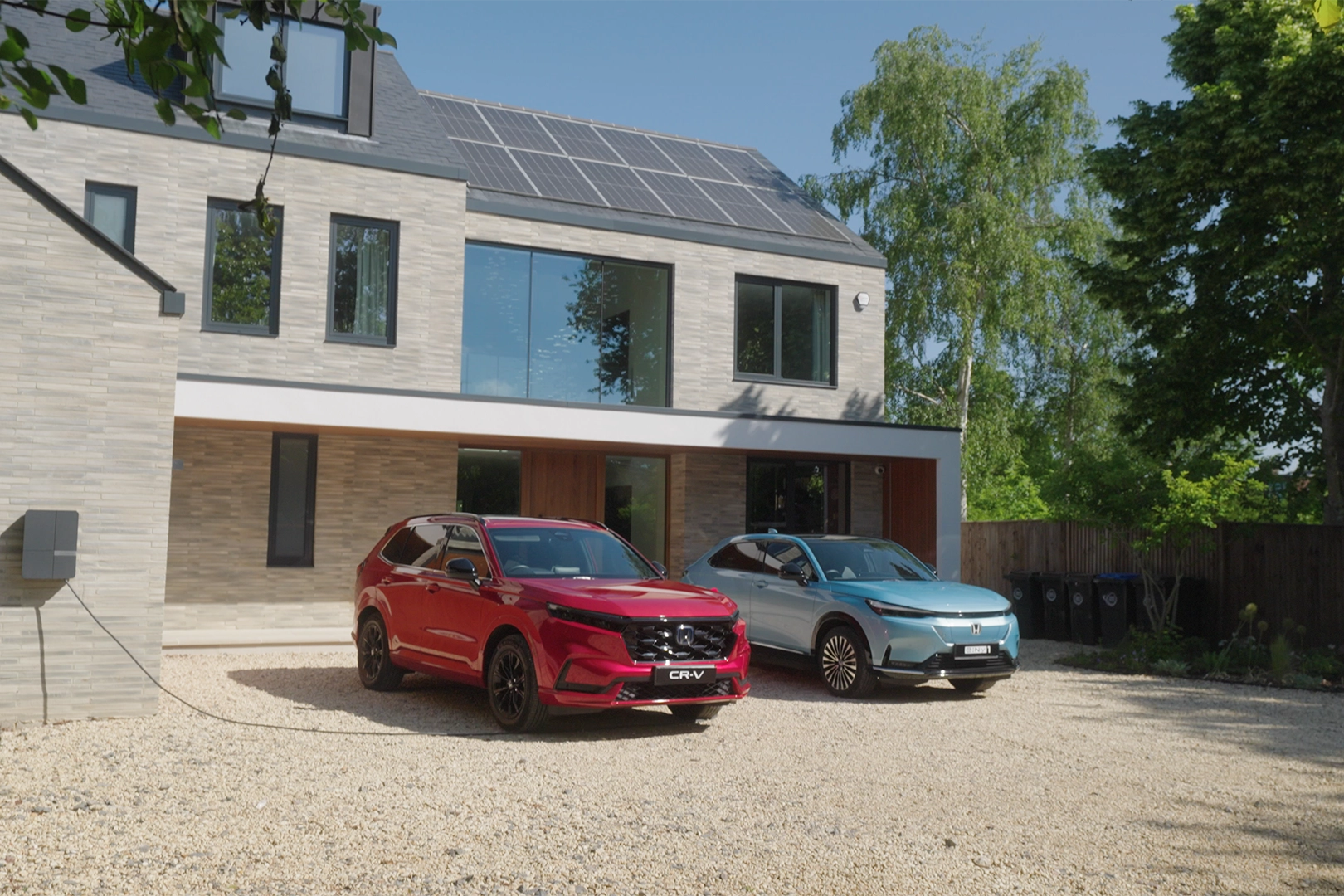From 2027, newly built homes in England will be required to meet the updated Future Homes Standard, a set of regulations designed to improve energy efficiency and reduce carbon emissions of new homes. A key part of this new revision; solar panels.
Unless exemptions apply, all new homes will be required to have solar panels which cover at least 40% of the building’s ground area.
For many, the idea of a solar-powered home might still feel like a future concept, but this change marks a big step forward in making renewable energy a standard feature in English housing. Here’s what it means for you, your home, and your wallet.
What Are Solar Panels?
Let’s start with the basics. Solar panels (also referred to as photovoltaics or PV panels) capture energy from sunlight and convert it into electricity.
Usually installed on rooftops, they can soak up the most sunlight, even on cloudy days. The generated electricity can then be directly used to power the home’s appliances, lighting, and even electric vehicles (EVs).
Smart Export Tariffs are offered by the majority of suppliers. If more electricity is generated than you need, you can return this excess power to the grid, earning you a financial return.
Solar panel installations include a solar inverter (which converts DC electricity into usable AC). A handy addition increasing in popularity are battery storage units, which allow homeowners to store energy for use during peak times or after the sun goes down, helping homeowners avoid high electricity prices and maximise their self-generated electricity.

Why the Change?
The UK government has committed to reaching net zero carbon emissions by 2050.
So, with buildings currently accounting for roughly 25% of the UK’s total emissions, homes are a critical part of the solution1. Most of these emissions come from heating, hot water, and domestic electricity use.
By mandating solar panels on new-build homes under the Future Homes Standard, the government aims to:
- Ensure new homes are ‘zero-carbon ready’ from the outset
- This means they will produce at least 75-80% less carbon emissions compared to current standards and be capable of achieving net-zero emissions as the electricity grid decarbonizes, all without requiring future retrofitting
- Reduce reliance on fossil fuels for home energy
- Lower energy bills and make homes more resilient to future energy price volatility
This also reduces the need for costly retrofitting in the future, avoiding disruption or expense down the line.
What Do Solar Panels Offer Homeowners?
For new homeowners, solar panels offer several clear benefits:
- Reduced Energy Bills: By generating your electricity, reliance on the grid decreases, especially during daylight hours. This can lead to a reduction in monthly electricity bills.
- Earnings Through Export: As mentioned above, the Smart Export Guarantee (SEG) allows homeowners to sell excess electricity back to the grid. While earnings vary depending on the provider and export rate, it provides an ongoing financial benefit.
- Energy Independence: Solar-equipped homes are less affected by rising energy prices. This independence is especially valuable during periods of high demand or market volatility.
- Support for EV Charging: Homes with solar panels can make full use of smart EV charging platforms, such as e:PROGRESS. Charging an EV with self-generated energy reduces your charging emissions and lowers charging costs.
Environmental Benefits
Switching to solar reduces your home’s carbon footprint dramatically. According to the Energy Saving Trust, a typical 4 kWp solar PV system can reduce annual carbon emissions by around 1.3 to 1.6 tonnes, roughly a 25% reduction compared to a home without solar panels2.
Simply, solar is a renewable energy source. By generating power from your own solar system, you rely less on grid electricity, which still draws on non-renewable energy sources. Therefore, you reduce the environmental impact of your electricity use.

What About the Cost?
The upfront cost of installing solar panels acts a quite a large barrier for many homeowners. However, for homes built from 2027 onwards, the cost of solar will be incorporated into the overall price of the property.
Here’s why that matters:
- Spread Over Time: When solar is part of a mortgage, the cost is paid gradually rather than as a large one-time investment.
- Built-In Efficiency: Developers can optimise the integration of solar, battery storage, and energy management systems during the construction phase, making installations more efficient and potentially more cost-effective.
- Immediate Savings: While the average payback period in the UK is around 6-10 years, homeowners benefit from immediate reductions in energy bills from day one.
- Added Property Value: Energy-efficient homes with solar panels are increasingly attractive to buyers. Research has suggested that homes with solar sell faster and for more money.
Challenges and Considerations
Not all roofs are the same. The orientation, angle, and shading can affect how much energy is generated. The government and developers will need to consider this in building designs and planning permissions to ensure consistent performance.
Battery storage is another key factor and a financial consideration. While not yet required under the Future Homes Standard, combining solar with home batteries allows homeowners to maximise self-consumption by storing energy for later use, further reducing reliance on the grid and avoiding peak prices.
Looking Ahead
From 2027, solar panels won’t be a luxury; they’ll be a requirement for new homes. This builds on a gradual shift in the way homes are designed and powered in the UK, adding further to the requirement to have heat pumps in new homes that came into effect in 2025. New homes in England are becoming more sustainable.
So, whether you’re planning to buy a new home or just keeping an eye on the future of housing, solar may be something to get familiar with. It represents not just an environmental upgrade, but a practical one too, by offering long-term savings and lowering carbon emissions.



